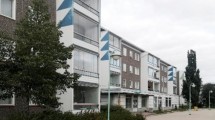Abstract
The aim of conducting a series of community design workshops was to understand the unique needs and desires of the community, gather older residents’ ideas, suggestions and solutions for their community’s public space and urban problems so as to aid the design and placemaking of neighbourhood public space for an ageing community. The eight workshops were conducted in Bukit Panjang Town, specifically on Bukit Panjang Neighbourhood 2 Park. The themes included: Needs, Experiences and Vision; Accessibility and Connectivity ; Park Identity and Activity; Safety and Security ; Walk and Talk Urban Audit Session; Park Spirit and Sense of Place ; and Community and Ownership. While participants expressed a general satisfaction with the park, they had concerns mostly with tidiness of the park, maintenance of greenery and managing the presence of undesirables.
Access this chapter
Tax calculation will be finalised at checkout
Purchases are for personal use only
Similar content being viewed by others
Notes
- 1.
HDB is the abbreviation for Housing and Development Board, the public housing agency in Singapore. Public housing is popularly referred to as HDB housing/block/flat in Singapore.
- 2.
Refers to the Individual Physical Proficiency Test (IPPT) set by the Singapore Armed Forces, Singapore Police Force and Singapore Civil Defence Force to test the basic components of physical fitness and motor skills of their service people.
- 3.
This is a 62 m long purpose-built wildlife bridge across the Bukit Timah Expressway. Built some 30 years after the expressway, the ecolink bridge seeks to reconnect Bukit Timah Nature Reserve to Central Catchment Nature Reserve, Singapore’s largest nature reserve. These two nature reserves were connected before the construction of the expressway.
- 4.
See Chap. 5
- 5.
See Chap. 6.
- 6.
Succeeding the report submission to the local town council, many of the recommendations for BPN2 Park were implemented.
References
Arnberger, A., & Eder, R. (2011). The influence of age on recreational trail preferences of urban green-space visitors: A discrete choice experiment with digitally calibrated images. Journal of Environmental Planning and Management, 54(7), 891–908.
Bartolomei, L., Corkery, L., Judd, B., & Thompson, S. (2003). A bountiful harvest: Community gardens and neighbourhood renewal in Waterloo. New South Wales Government: Department of Housing and University of New South Wales.
Berman, M., Jonides, J., & Kaplan, S. (2008). The cognitive benefits of interacting with nature. Psychological Science, 19(12), 1207–1212.
Bird, S. R., Radermacher, H., Sims, J., Feldman, S., Browning, C., & Thomas, S. (2010). Factors affecting walking activity of older people from culturally diverse groups: An Australian experience. Journal of Science and Medicine in Sport, 13(4), 417–423.
Campbell, L., & Wiesen, A. (Eds.). (2009). Restorative commons: Creating health and wellbeing through urban landscapes. USDA Forest Service.
Canadian Parks Council. (2014). Connecting Canadians with nature: An investment in the wellbeing of our citizens. Canadian Parks Council.
Crowhurst Lennard, S. H., & Lennard, H. L. (1995). Livable cities observed. Gondolier Press.
Godbey, G., & Blazey, M. (1983). Old people in urban parks: An exploratory investigation. Journal of Leisure Research, 15, 229–244.
Goodbey, G., Payne, L., & Orsega-Smith, B. (2004). Examining the relationship of local government recreation and park services to the health of older adults. Robert Wood Johnson Foundation Grant Research Results.
Gobster, P., & Westphal, L. (2003). The human dimensions of urban greenways: Planning for recreation and related experiences. Landscape and Urban Planning, 68, 147–165.
Kaplan, R., & Kaplan, S. (1989). The experience of nature: A psychological perspective. Cambridge, NJ: Cambridge University Press.
Kent, F., & Madden, K. (1998). Great parks/Great cities: Seattle, Urban Parks Institute regional workshop publication. http://www.pps.org/reference/creating-great-urban-parks/. Accessed July 27, 2015.
Mowan, A., Kaczynsk, A., & Cohen, D. (2008). The potential of parks and recreation in addressing physical activity and fitness. Research Digest, 9(1).
Project for Public Spaces. (2009a). Designing and maintaining safer parks. http://www.pps.org/reference/what-role-can-design-play-in-creating-safer-parks/. Accessed July 27, 2015.
Project for Public Spaces. (2009b). What is placemaking? https://www.pps.org/reference/what_is_placemaking/. Accessed July 27, 2015.
Silberberg, S., Lorah, K., Disbrow, R., & Muessig, A. (2013). Places in the making. MIT.
Walljasper, J. (2007). The great neighbourhood book. BC, Canada: New Society Publishers.
Acknowledgements
We gratefully acknowledge the following for their generous support and assistance with the community design workshops: Dr. Teo Ho Pin, Mayor, North-west Community Development Council for his advice and guidance; Lawrence Toh, Senior Property Manager, Holland-Bukit Panjang Town Council, Lin Shuang Fu, Deputy Constituency Director, Bukit Panjang Community Centre, Lim Yong Moi, Bukit Panjang Zone 4 Residents Committee Chairman, K. C. Tan, Bukit Panjang Zone 4 Residents Committee Manager for their facilitation and outreach to residents and for allowing us the use of Bukit Panjang Zone 4 Residents Committee premises for the workshops; Rita Soh, Advisor, Lee Li Ming Programme for Ageing Urbanism (2014–16), Director, RDC Architects Pte Ltd and President, Board of Architects Singapore (2010–15), for working alongside us during the workshops; our colleagues, Josephine Ng, Parvathi S Nair and our student intern, Lim Aunn Ning for helping us with the workshop organisation, facilitation, translation and report on workshop proceedings; residents of Bukit Panjang Zone 4 who participated in our workshops and generously shared with us their ideas, solutions as well as their own grown and baked food.
Author information
Authors and Affiliations
Corresponding author
Editor information
Editors and Affiliations
Rights and permissions
Copyright information
© 2019 Springer International Publishing AG, part of Springer Nature
About this chapter
Cite this chapter
Yuen, B., Cheong, S.W. (2019). Designing with Older Residents. In: Yuen, B. (eds) Ageing and the Built Environment in Singapore. Springer, Cham. https://doi.org/10.1007/978-3-319-92444-1_10
Download citation
DOI: https://doi.org/10.1007/978-3-319-92444-1_10
Published:
Publisher Name: Springer, Cham
Print ISBN: 978-3-319-92443-4
Online ISBN: 978-3-319-92444-1
eBook Packages: Earth and Environmental ScienceEarth and Environmental Science (R0)




